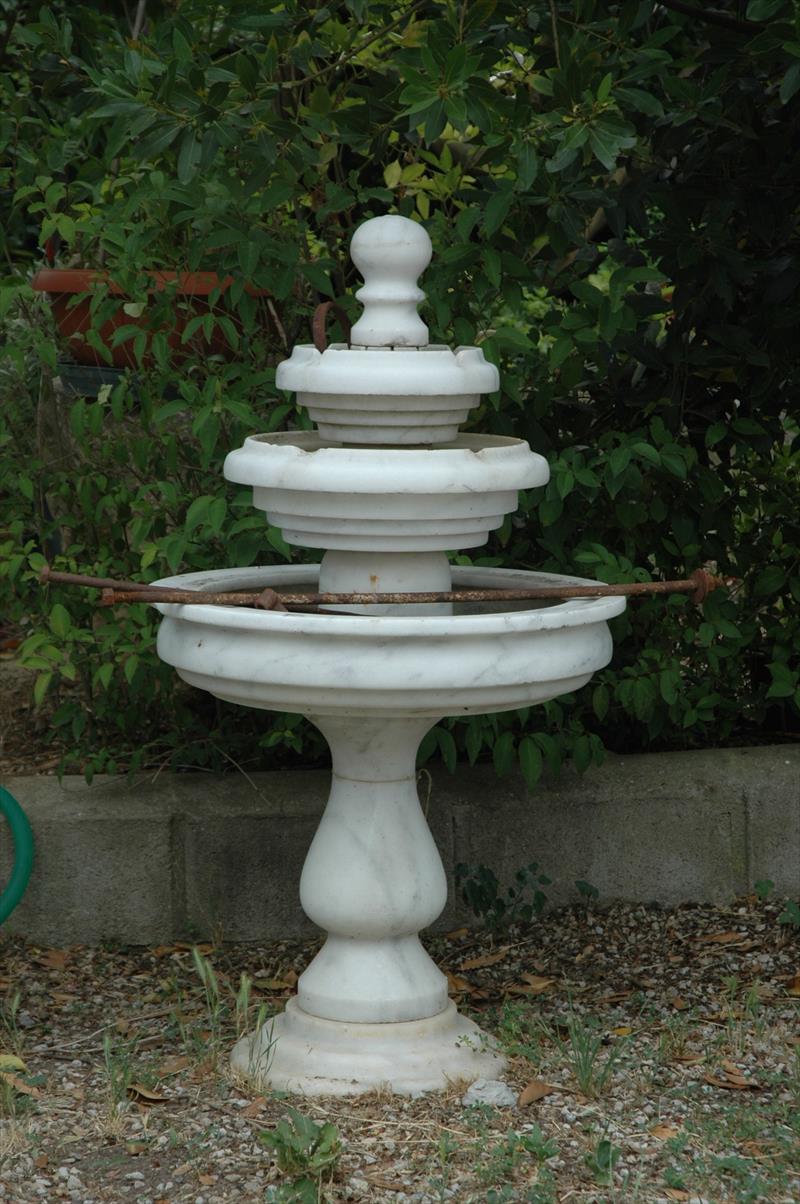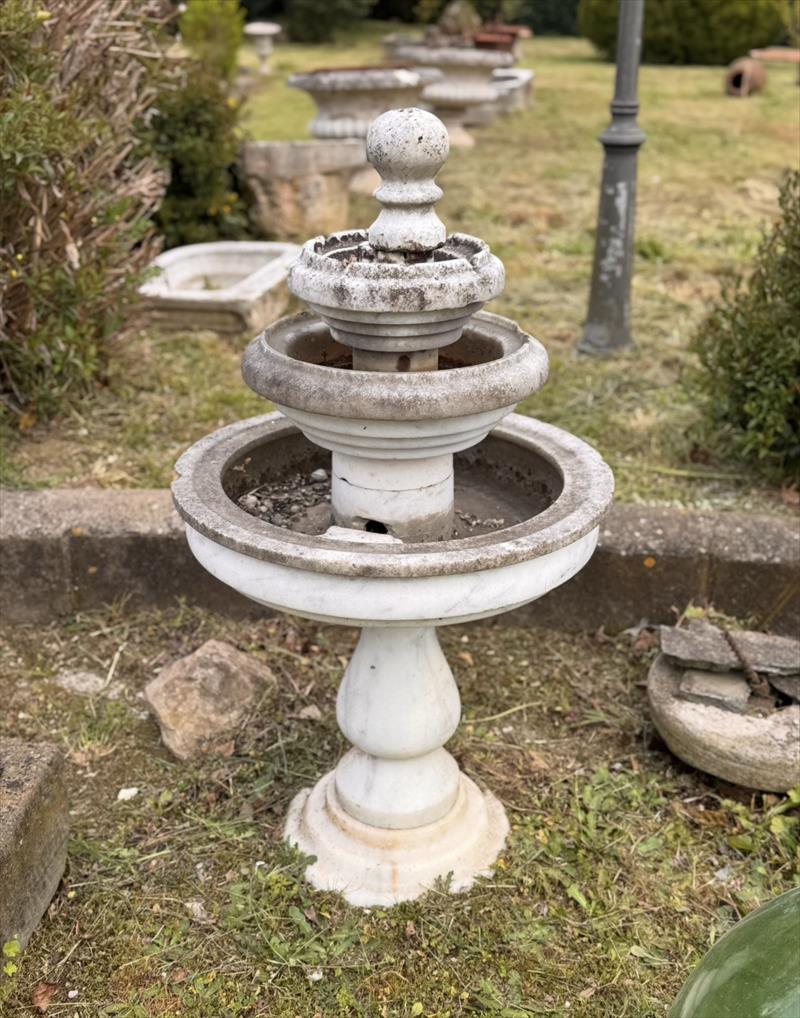Garden fountain in white marble – Central Italy, mid-19th century
Ornamental 19th-century fountain from central Italy, crafted from hand-carved and hand-polished Apuan white marble. Its design follows the classical layout derived from neoclassical models, with a vertical structure of three gradually descending basins, supported by a central baluster-shaped shaft.
Inside the shaft, a through cavity confirms the original presence of a channel for water circulation, which was directed upward to feed the cascading flow. At the top, a pierced onion-shaped finial served as the outlet for the water spout.
The three moulded-profile basins, arranged in a decreasing symmetrical sequence, allowed the water to flow gently from one to the next, creating a slow and continuous cascade. The water was collected in the lower basin and recirculated through a system powered by a manual or mechanical pump, according to the technology available in the mid-1800s.
The Apuan marble, likely quarried between Carrara and Seravezza, was valued at the time for its resistance to weathering and for its ability to develop a natural patina, as evidenced by the current surface oxidation, encrustations, and weather marks.
With its graceful presence and symmetrical line, this fountain was likely intended for a cloister or an Italian-style garden, where every element contributed to a sense of harmony.
Today, it can return to the heart of an open space—not to dominate, but to suggest: a water feature, a gesture of stillness, an authentic accent for those who see in a garden not just furnishing, but atmosphere.
- Material: Carrara white marble
- Size: cm 63 x 111 h
- Condition: Tobe restored
- Period: First half of the 19th century



